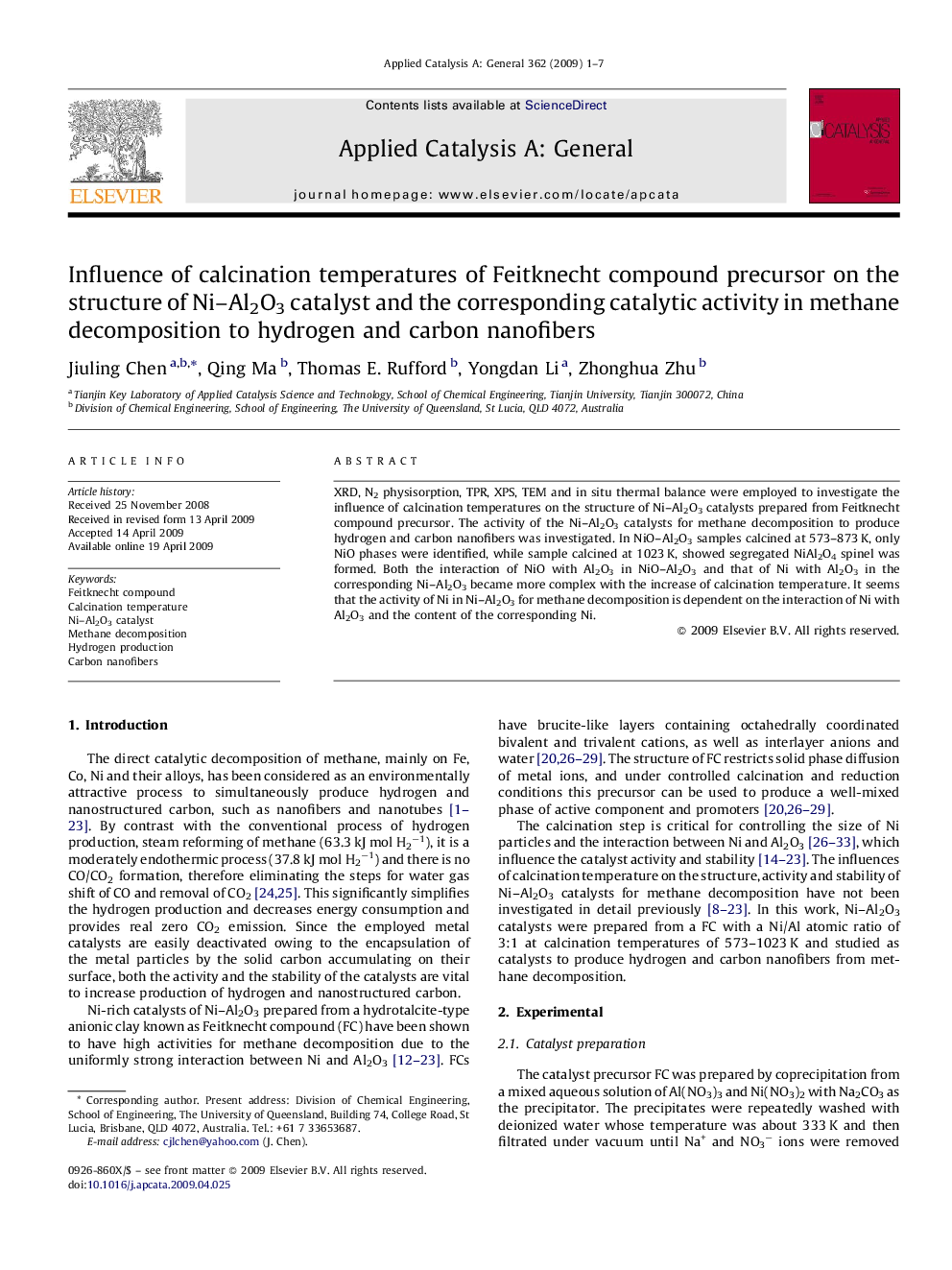| Article ID | Journal | Published Year | Pages | File Type |
|---|---|---|---|---|
| 42679 | Applied Catalysis A: General | 2009 | 7 Pages |
XRD, N2 physisorption, TPR, XPS, TEM and in situ thermal balance were employed to investigate the influence of calcination temperatures on the structure of Ni–Al2O3 catalysts prepared from Feitknecht compound precursor. The activity of the Ni–Al2O3 catalysts for methane decomposition to produce hydrogen and carbon nanofibers was investigated. In NiO–Al2O3 samples calcined at 573–873 K, only NiO phases were identified, while sample calcined at 1023 K, showed segregated NiAl2O4 spinel was formed. Both the interaction of NiO with Al2O3 in NiO–Al2O3 and that of Ni with Al2O3 in the corresponding Ni–Al2O3 became more complex with the increase of calcination temperature. It seems that the activity of Ni in Ni–Al2O3 for methane decomposition is dependent on the interaction of Ni with Al2O3 and the content of the corresponding Ni.
Graphical abstractNi–Al2O3 catalysts prepared from Feitknecht compound precursor were active for decomposition of methane to produce CO/CO2-free hydrogen and carbon nanofibers. The activity and the stability of the catalysts were dependent on the Ni–Al2O3 structure. The catalyst stability was closely related to the calcination temperature of the precursor during the catalyst preparation process. The influences of the calcination temperatures on the structure and the catalytic activity of Ni–Al2O3 are discussed.Figure optionsDownload full-size imageDownload as PowerPoint slide
